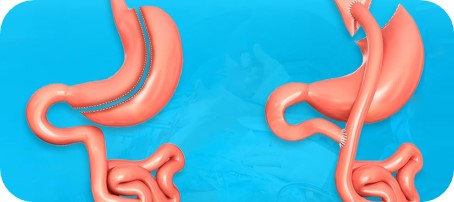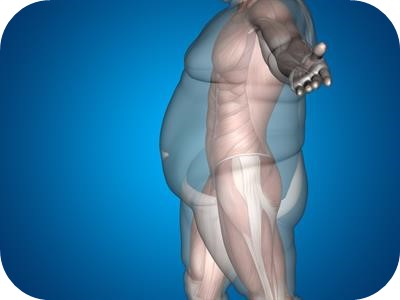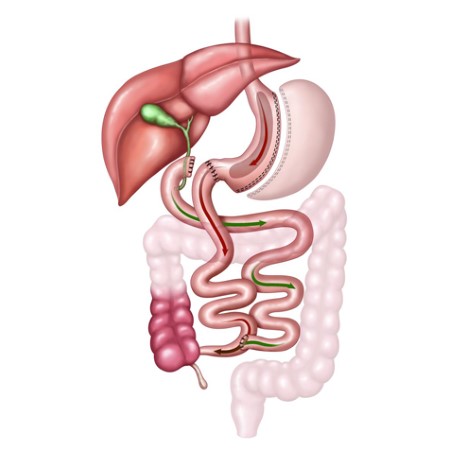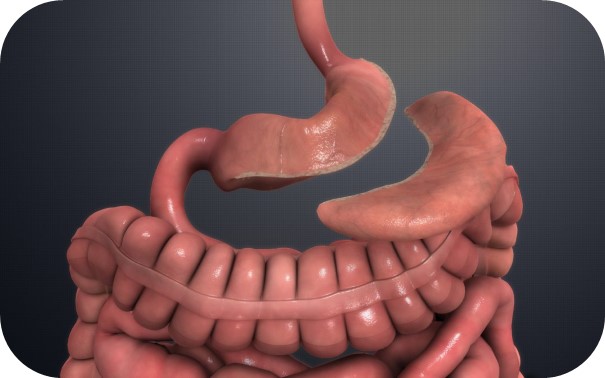










Why is Revision Surgery Applied?
In 10% of all obesity surgeries in the world, there is a possibility of "not achieving the desired result". If a patient who has undergone bariatric surgery loses less than 50% of his excess weight in the 18-month period, that bariatric surgery is unsuccessful. In addition, weight regained after long or late weight loss is also an indicator of failure. For this reason, bariatric surgeons may prefer to translate failed restrictive surgical procedures. The processes that can be translated are malabsorptive, that is, malabsorptive or combined (impairing and restricting absorption) methods.
Which Patients Cannot Have Revision Surgery?
The desired result cannot be achieved with bariatric surgery or other conditions may occur. Accordingly, the patient is taken to the process of re-evaluation for "revision surgery". But; A patient who has undergone bariatric surgery may not be eligible for bariatric surgery again during the “evaluation period”.
The patients in the following group are generally not suitable for revision surgery.

Processes of Revision Surgery
Whether the patient is suitable for revision surgery comes first before deciding on surgery. And it is evaluated according to the above facts. At the same time, in addition to these, it should be evaluated in the unsuccessful patient. Because the reason for the failure to be successful is the patient or whether the operation brought failure to the patient, it should be evaluated in detail. In addition, it is important that the patient, who is re-evaluated for revision surgery, is examined by a psychiatrist/psychologist and dietitian. Learning whether the patient has a stress-related eating and drinking disorder will also seriously affect the success of the operation. Therefore, it is undoubtedly important that the patient is evaluated thoroughly in terms of success in the new surgery.
Factors that may cause obesity surgery to fail should be identified. In this respect, UPPER GIS endoscopy and passage radiographs may be requested. Before all these evaluations, some tests are requested from all patients for whom revision surgery has been decided. These; These are necessary tests such as "blood tests, endoscopy, pulmonary function tests, anesthesia evaluation". Preoperative education is given to the patient. In the next process, the day of the operation is decided and the patient is taken to the "revision surgery" operation. The patient's controls are performed every three months in the first year after the operation, and at the 18th and 24th months in the second year. From the third year, follow-ups are carried out annually.
What are Revision Surgery Methods?
If the wrong choice was made in the first bariatric surgery and it was successful, then a revision, or "complementary", is performed. The results of revision surgeries performed with the correct method during the revision surgery procedure are positive. Numerically, 90% success is achieved. It is inevitable that individuals who do not follow "strict rules" in terms of nutrition after obesity surgery will not be "successful". In this case, planning the "revision surgery" instead of repeating the surgery can ensure success. For example; Gastric sleeve gastrectomy surgeries may be "unsuccessful". It is possible to say that the "success rate" when bypassing this patient is around 90%.

Patients with Gastric Band
"Failure" may occur after bariatric surgery based on gastric banding. In this case, the removal of the band in the stomach and the “appropriate bariatric surgery procedure” are applied in revision surgery.
Patients with Gastric Bypass
In patients who have gastric bypass surgery, it can be determined that “the passage between the stomach and the intestine is widened”. In this case, the “passageway” is narrowed again during the revision operation with endoscopy. Thus; Foods that stay in the stomach for a long time cause the patient to feel full for a long time. In this way, weight loss is achieved. In addition, the intestinal loop is separated and reunited with the bypass. This means that part of the intestines have “minimal” contact with food.
Patients with Tube Stomach Surgery
If the desired weight loss result is not achieved in patients who have had sleeve gastrectomy surgery, or if weight loss is no longer achieved as a result of the re-expansion of the stomach, a reslevee gastrectomy, that is, sleeve gastrectomy, can be performed for revision surgery. In addition, the Roux-en-Y proximal technique can also be applied during slevee gastrectomy. The proximal technique, which is a gastric bypass technique, allows to create a pouch in the stomach. In this technique, which is based on the principle of deactivation, all of the food coming into the stomach accumulates in the pouch and is attached to this pouch in the small intestines. The small intestines are cut 50 to 75 cm from the distal part that goes towards the large intestine. The end of the small intestine from which bile and pancreatic fluid comes from is joined back to the intestine from the front (70-80 cm).

Duodenal Switch Surgery
Duodenal Switch, which is based on the rule that food comes into contact with the less frequent part of the intestine, is made by separating the duodenum and reconnecting it from the distal part of the small intestine.
Transit Bipartition Surgery
A mouth opening is made from the distal part of the small intestine to a near part of the gastric outlet. In this way, some of the food travels through the entire intestine, while the rest goes directly to the outside of the intestine. Getting rid of "insulin intake" in obese patients with diabetes is not impossible with transit bipartition. Transit bipartition; surgery will both accelerate weight loss and control sugar.
Risks After Revision Surgery
It would be wrong not to say that there is a bit more risk in revision surgeries when obesity surgery is performed for the second time compared to the first. While the risk of leakage or bleeding in an individual who has had the first bariatric surgery varies between 1 and 2%, these risks can increase up to 3 to 4% in revision surgeries. However, being aware that the risks will not cause bigger problems than obesity and not ignoring the 96% success rate is one of the issues to be considered before revision surgery.
Returning to daily life after revision surgeries is again similar to the first surgery process. If the patient does not have any problems, procedures can be performed to be discharged on the 3rd to 4th day. Generally, within 7-10 days, the patient can return to daily life.